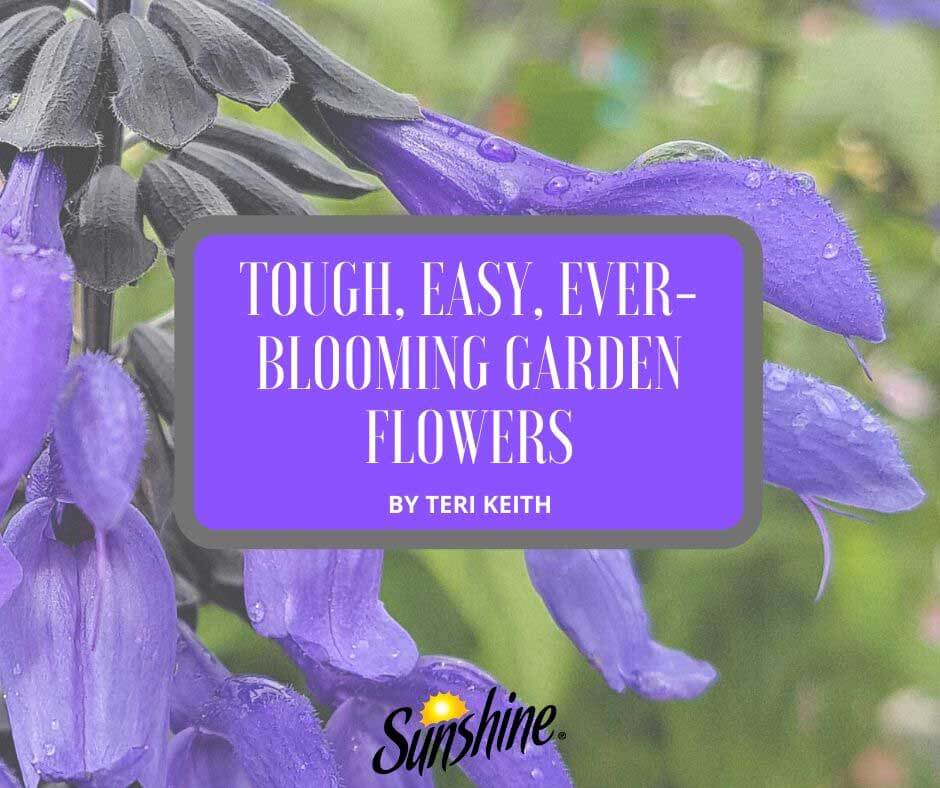
If you want reliable, carefree, long-blooming flowers that still perform through hot, dry summers, they are not difficult to find. The best are longtime garden favorites as well as exciting new varieties, which are bred for even greater beauty, easier care, and higher disease resistance. It’s always nice to mix old-favorites with the newest and coolest plants available. If it’s easy and ever-blooming, it’s welcome in my garden.
For the last several years, we have experienced extra hot, dry periods in August and September, where I live in Bloomington, Indiana, so I almost always look for drought and heat tolerant annual flowers. Here are some that I have found to be the best for both containers and garden beds.
Salvias

Big, sun-loving salvias always have a place in my garden, and my favorites tolerate tough conditions and still look beautiful. Of all the purple salvias, and there are many of them, there is one that I like the best, Black and Blue salvia (Salvia guaranitica ‘Black and Blue’, USDA Hardiness Zones 8-10 ). It reaches around 3 feet tall but can be cut back easily, and produces intense indigo-blue flowers with black bases (calyces) all summer long. Plant it in a large container or well-drained flower bed where you can see it through a window and watch hummingbirds visit its flowers. When passing by, rub one of its fragrant, anise-scented leaves between your fingers. Some years ‘Black and Blue’ has reseeded in my garden, with a few new plants coming up in the spring.
This year I will be adding Amante salvia (Salvia ‘Amante’, Zones 8-10) to my garden for its bright fuchsia flowers with very dark calyces. ‘Amante’ can grow to 4 feet, so I will put mine at the back of a daylily bed, which loses color at the end of June. A final, bold, tough salvia that I am getting for the first time this year is the old-fashioned Van Houttei red salvia (Salvia spendens ‘Van Houttei’, Zones 9-11). ‘Van Houttei has spikes of burgundy-red, tubular flowers and is beloved by hummingbirds. Another 4 footer, it will be in the back of a flower bed with some afternoon shade to keep it looking its best. Like most red salvia, it should be deadheaded on occasion.
African and French Marigolds
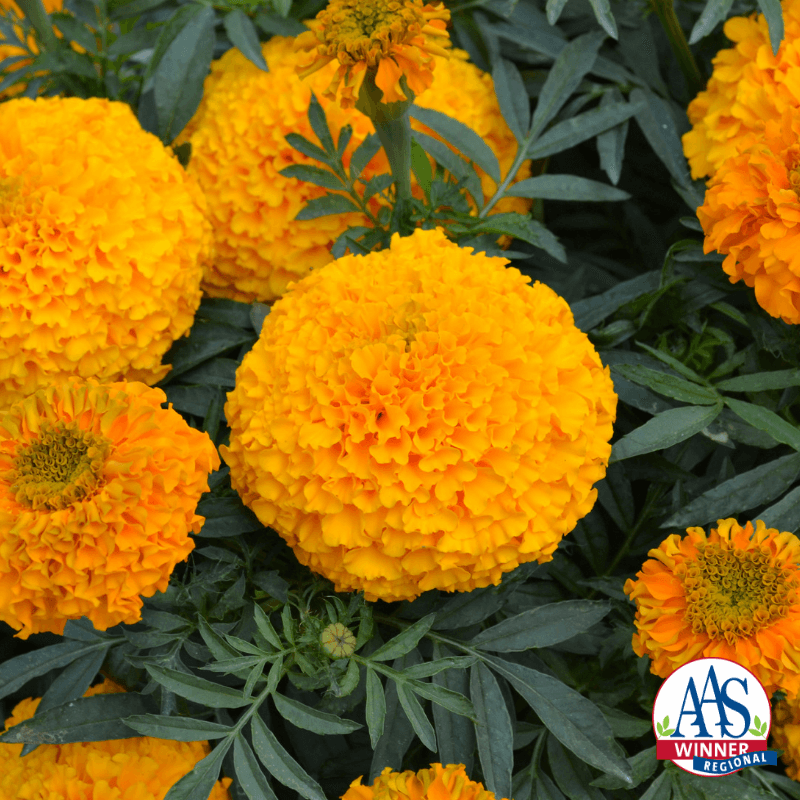
Good companion plants to these tall salvias would be 2-foot African marigolds (Tagetes erecta) planted around the base. I suggest 2019 All America Selections Winner Big Duck Orange, which has large, fluffy, tangerine-orange flowers that bloom all summer long and even up until frost.
Marigolds are traditional garden flowers because they are so effortless to grow, tolerant of the worst summer weather, and they come in many heights and amazing shades of orange, yellow, red. The two most common types at garden centers are tall African marigolds and shorter, bushier French marigolds (Tagetes patula), which are generally 8 to 12 inches high. French marigolds grow well in pots and garden edges Those in the Disco Series, which reach 10 inches and have extra-large, single flowers of gold, orange, and orange-red, are extra pretty. Plant Disco Mix to get all of the colors in one packet.
Marigolds do require some deadheading to keep in top shape, and they require full sun and average soil with good drainage. They’re good flowers to plant around the vegetable garden as well because they help ward off harmful pests, particularly tomato root-knot nematodes, which damage tomato roots. (Click here to learn more about companion planting with marigolds.)
Celosias
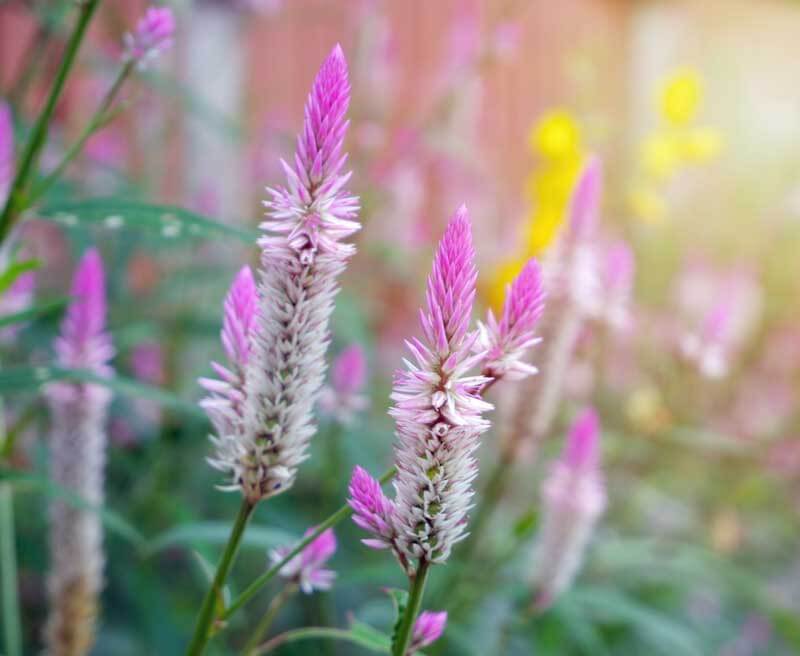
Celosias love sun and heat! Spike celosia (Celosia spicata) is a very long-blooming choice with flowers of pink, white, or burgundy. It looks great even on the hottest days and tolerates drought very well. ‘Flamingo Feather’ is a long-standing variety that reaches 2.5 feet and bears spikes of pinkish flowers until fall.
Classic plume celosia (Celosia cristata var. plumosa) and cockscomb celosia (Celosia cristata var. cristata) have beautiful flowers that come in two distinct shapes, upright fluffy plumes and those that resemble cockscombs. The flowers come in red, orange, yellow, deep rose, pink, and white and vary in height from 6 inches to 3 feet, depending on the variety. A long-time favorite plume celosia is the classic, award-winning ‘New Look‘ with its glowing red, 18″ plumes and purplish leaves. The scarlet ‘Twisted Red’ is a high-performing cockscomb type from Proven Winners that blooms continuously and reaches 18 inches.
In sunlight, celosia blooms are iridescent. They need full sun, well-drained soil, and attract butterflies. Plant them in containers or flower borders
Supertunias
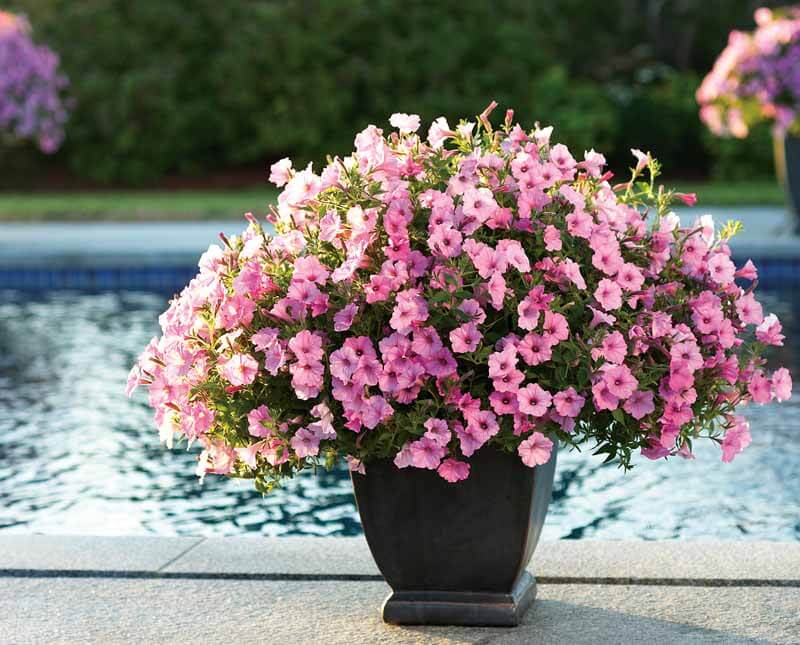
Good breeding has transformed the ordinary Petunia into something fantastic, the Supertunia®. The petunias in this series are drought-tolerant, heavy blooming, self-cleaning (no deadheading), and unbelievable. There are many types in a wide array of sizes and colors.
Supertunia Vista® varieties mound to 2 feet and trail or spread to 4 feet, making them perfect container or front-of-the-border flowers. Supertunia Vista® Bubblegum is a best-seller due to its high vigor and prolific bubblegum-pink flowers. Supertunia® Black Cherry has gorgeous deep-red flowers that fade into an almost black center.
Last year Proven Winners sent me Supertunia® Mini Vista™ Violet Star plants to try, which have small purple-and-white-striped flowers, as well as some colorful Calibrachoa Superbells® varieties. The plants looked similar until the heat hit. All my other Superbells started looking stressed in the hot summer weather, but Mini Vista™ Violet Star was gorgeous all season. All of the Mini Vistas have small flowers, like Calibrachoa, but are heat and drought-resistant, so they will be my choice from now on.
Profusion Zinnias
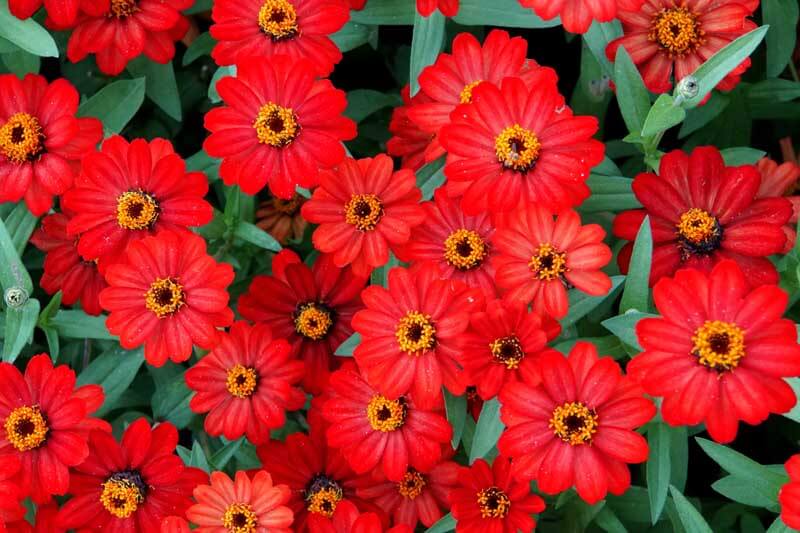
Zinnias are a real mainstay of the hot, dry, sunny garden. There are zinnias of many heights and habits, but I grow only one type, those in the Profusion series. They were a real breakthrough when they were first introduced in the early 1990s because compact, spreading Profusion zinnias are everblooming, tough as nails, and very disease resistant. Depending on the variety, the plants become covered with cherry, gold, fire (bright orange-red), apricot, or white flowers all summer. Garden centers sell them or you can grow your own from seed. Seeds for the Profusion AAS Mix contains three award-winners, Profusion Orange, Cherry, Red, and White.
Planting and Caring for Annuals
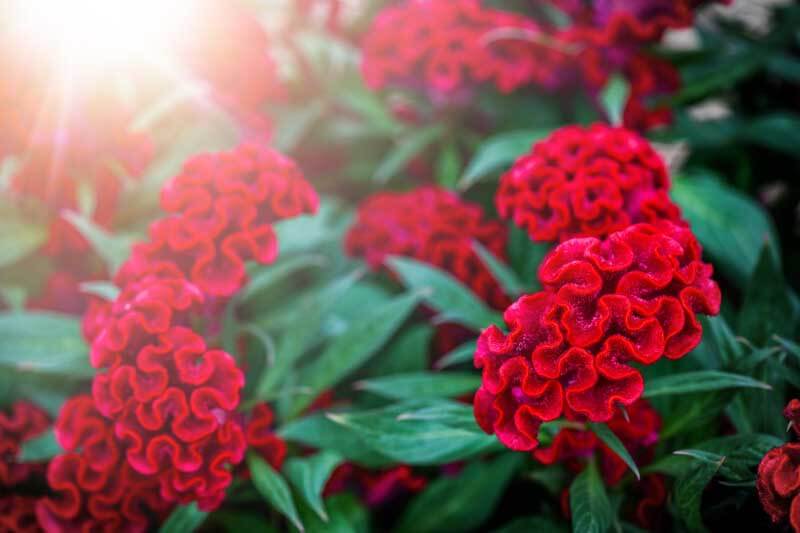
At planting time, be sure that you site your plants in the best location for their growing needs, and prepare their soil for planting. When planting in the garden, amend the soil with Sunshine Peat Moss to increase organic matter. Mix it in uniformly with the ground soil at planting time. Then mulch to help keep weeds at bay and help hold in soil moisture.
When planting in containers, Sunshine Container Potting Mix is a great choice for potted flowers. Whether planting in pots or beds, I always add a quality, time-released fertilizer formulated for garden flowers, like Proven Winner Premium Continuous-Release Plant Food, which is formulated for flowers.
Being heat- and drought-tolerant does not mean plant and forget. When watering garden plants, keep the soil moist, but not wet, until the plants are established, and then water them as needed as weather conditions become dry. After 1-2 weeks with no rain, everything will need to be watered. Containers dry out faster than the garden, especially when the plants are mature, so check them daily for water during the high heat of summer.

